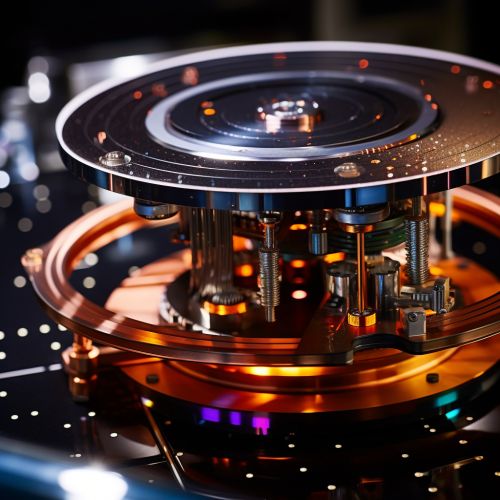Quantum Computing with Quantum Optomechanical Systems in Quantum Technology
Quantum Optomechanical Systems
Quantum optomechanical systems are a subfield of quantum physics that study the interaction between light and mechanical motion at the quantum level. These systems are typically composed of a microresonator that can confine light and a mechanical element that can move in response to the radiation pressure of the confined light. The coupling between the mechanical motion and the light field can lead to various quantum phenomena, such as quantum entanglement and quantum superposition.


Quantum Computing
Quantum computing is a field of study focused on the development of computer based technologies centered around the principles of quantum theory. The quantum computer, following the laws of quantum physics, would gain enormous processing power through the ability to be in multiple states, and to perform tasks using all possible permutations simultaneously. In a classical system, a bit would have to be in one state or another. However quantum mechanics allows the qubit to be in a superposition of states, greatly increasing the number of possibilities.
Quantum Optomechanical Systems in Quantum Computing
Quantum optomechanical systems have been proposed as a potential platform for quantum computing due to their ability to generate and manipulate quantum states of light and matter. The interaction between light and mechanical motion in these systems can be harnessed to perform quantum computations. For example, the mechanical motion can be used to mediate interactions between different light fields, enabling the implementation of quantum gates.
One of the main advantages of using quantum optomechanical systems for quantum computing is their scalability. These systems can be fabricated using standard microfabrication techniques, allowing for the integration of a large number of qubits on a single chip. Furthermore, the light fields in these systems can be easily manipulated and measured using optical techniques, facilitating the implementation of quantum algorithms.
Another advantage of quantum optomechanical systems is their versatility. These systems can operate in a wide range of conditions, from room temperature to cryogenic temperatures, and can be coupled to various types of qubits, including superconducting qubits and trapped ion qubits. This versatility makes quantum optomechanical systems a promising platform for the realization of a universal quantum computer.
Challenges and Future Directions
Despite the potential of quantum optomechanical systems for quantum computing, there are several challenges that need to be addressed. One of the main challenges is the decoherence of the quantum states due to the interaction with the environment. This decoherence can lead to errors in the quantum computations, limiting the performance of the quantum computer.
Several strategies have been proposed to overcome this challenge, including the use of quantum error correction techniques and the development of new materials and designs that can minimize the interaction with the environment. Furthermore, advances in the control and measurement of the light fields and the mechanical motion can also help to improve the performance of the quantum computer.
In the future, quantum optomechanical systems could play a key role in the development of quantum technologies, not only for quantum computing, but also for quantum communication and quantum sensing. These systems could also provide new insights into the fundamental aspects of quantum mechanics, contributing to our understanding of the quantum world.
